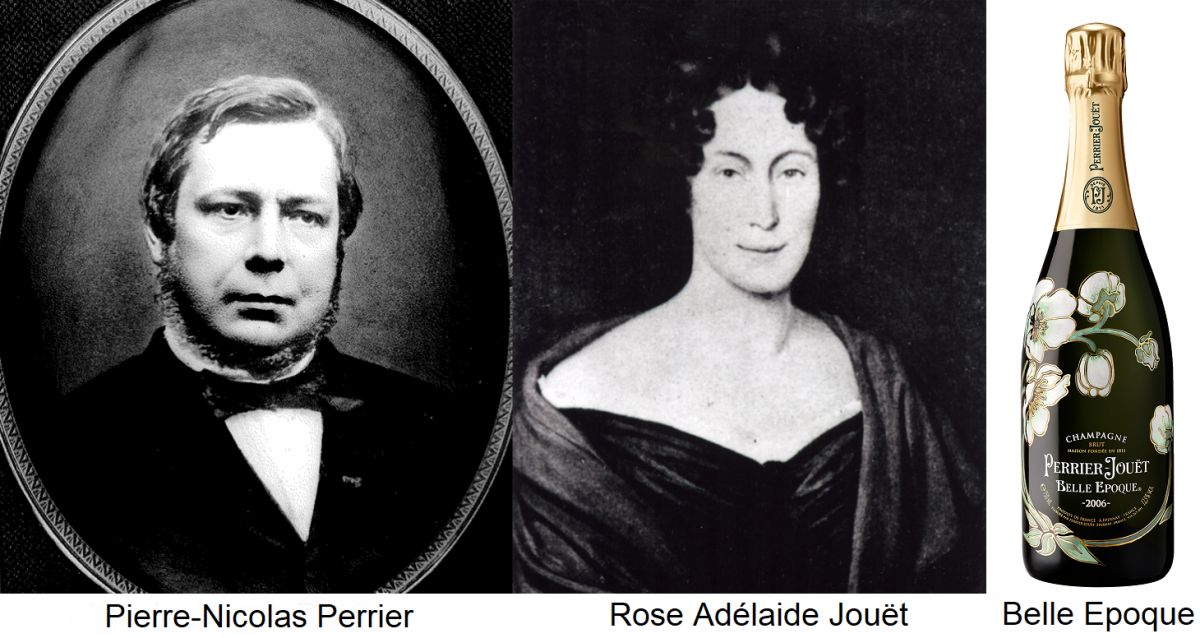The Champagne House (PJ for short), based in Épernay, was founded in 1811 by the cork producer Pierre-Nicolas Perrier (1786-1856) and Rose Adélaide Jouët (*1792), the daughter of a Calvados producer, who had married a year earlier. The flowers in the wedding bouquet were anemones, which are still on the labels and champagne bottles today. Adélaide was in charge of the vineyards and winemaking, while Pierre-Nicolas devoted himself to sales and marketing. The company expanded rapidly, with exports to Great Britain starting in 1815 and to the United States from 1837.

Son Charles expanded the company and in 1878 handed it over to his nephew Henri Gallice. The products were sold to many ruling houses, including Queen Victoria (1819-1901), Emperor Napoleon III. (1808-1873) and the Belgian King Leopold II. (1835-1909). In 1959 the company was sold to the champagne house Mumm by descendants of the founder. This was taken over in 2000 by the British giant Allied Domecq, which eventually sold both to the French multinational Pernod Ricard.
The vineyards cover some 270 hectares of vines. The standard brand of the house is "Blason de France" (coat of arms of France). The Cuvée de Prestige is the Blanc de blancs "La Belle Èpoque" in a bottle painted by the Art Nouveau artist Gallé with an anemone decoration, of which there is also a rosé. About three million bottles of champagne are produced annually, four fifths of which are exported. About 40% of this comes from the company's own vineyards with 108 hectares in, for example, the first-class Grand Cru areas of Avize and Cramant. The remainder is purchased from around 30 crus.
In 2008, a very special champagne was created for super rich people, of which only 100 cases of 12 bottles each are produced. One case costs € 50,000, which means € 4,167 per bottle. The crescent is custom made, so to speak, because the buyers of a case (you can't get less than that) can personally determine the assemblage with the chef de caves (cellar master). This means that they can choose the wines of different vintages. The bottle label can also be specially signed. This special champagne brand is undoubtedly one of the most expensive wines in the world. One of a total of three existing bottles of the 1825 vintage was opened in 2009 and tasted by Serena Sutcliffe (from the auction house Sotheby's), among others. However, the wine had already oxidized.
Voices of our members

For me, Lexicon from wein.plus is the most comprehensive and best source of information about wine currently available.
Egon Mark
Diplom-Sommelier, Weinakademiker und Weinberater, Volders (Österreich)